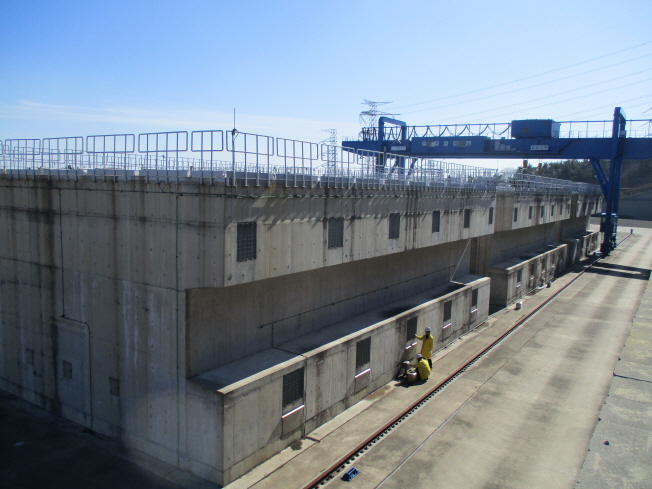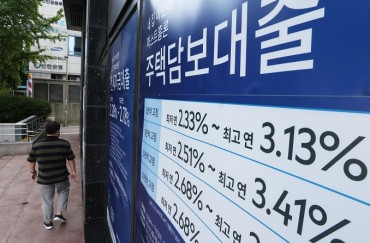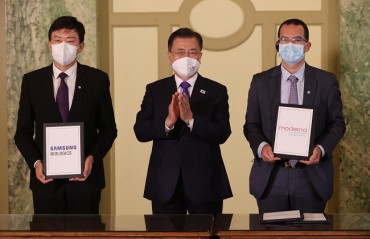
This undated photo provided by the Korea Hydro & Nuclear Power Co. shows a modular air-cooled canister storage facility at the Wolsong Nuclear Power Plant, 370 kilometers southeast of Seoul.
SEOUL, March 18 (Korea Bizwire) — An independent committee proposed on Thursday that legislation is needed to better handle and manage spent nuclear fuel as the issue has been a source of controversy over safety.
The body under the industry ministry stressed a new law is necessary to proceed with the matter of building storage for spent fuel rods and other waste in a transparent and predictable way.
The committee also said South Korea should set up an independent administrative body to monitor the management of waste, while helping play a role in narrowing differences among related parties.
South Korea, whose energy consumption largely depends on nuclear power generation, has been struggling to map out a detailed blueprint for handling spent nuclear fuel as the country’s storage space for the waste is running out.
Currently, South Korea has only temporal storage facilities, but it does not have any interim or permanent facilities.
Since kicking off the operation of its first nuclear plant in 1978, South Korea has been making efforts to find sustainable ways to handle the waste, but such attempts continued to end in vain as it failed to find suitable locations.

This photo taken on Oct. 20, 2020, shows the now-decommissioned Wolsong-1 nuclear reactor (R) in Gyeongju, 370 kilometers southeast of Seoul. (Yonhap)
Experts say without proper measures, it will take up to 300,000 years for the radiation level of waste from light water reactors, which account for 21 of 24 currently under operation, to fall to the level of natural uranium.
The accumulated amount of spent nuclear fuel was estimated at around 482,000 bundles as of 2019.
The country announced its blueprint on dealing with the spent nuclear fuel in 2016, but it has been facing criticisms that it failed to properly reflect the public’s voice. Thus, South Korea launched the committee in 2019 to gather opinions from experts and citizens.
The committee also requested the government build a new temporary storage facility at the Wolsong Nuclear Power Plant as planned.
Last year, South Korea decided to build an additional facility for spent nuclear fuel at the Wolsong plant, about 370 kilometers southeast of Seoul, after local residents living around the venue gave consent.
South Korea has been pushing to increase storage space at the Wolsong plant as its existing modular air-cooled canister storage installations are nearing full capacity. The country estimates the plant will run out of storage space by 2022.
(Yonhap)






